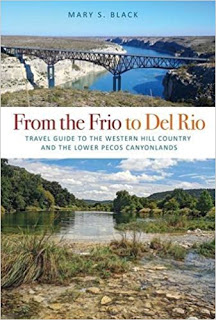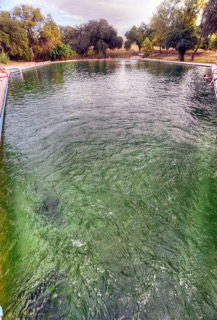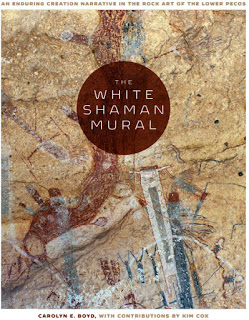
This blog posts on Mondays. This year, 2021, I am dedicating the first Monday of the month to Texas Books, in which I share with you some of the more unusual and interesting books in the Texas Bibliothek, that is, my working library. Listen in any time to the related podcast series.
On my shelf loaded with books on rock art the most beautiful and, I believe, the most important, is The White Shaman Mural, in which artist and archaeologist Carolyn E. Boyd makes the visionary and revolutionary argument, based on many years of research, that the rock art site in the Lower Pecos known as “White Shaman” is no random assemblage but a creation story. It can be considered North America’s oldest “book.”
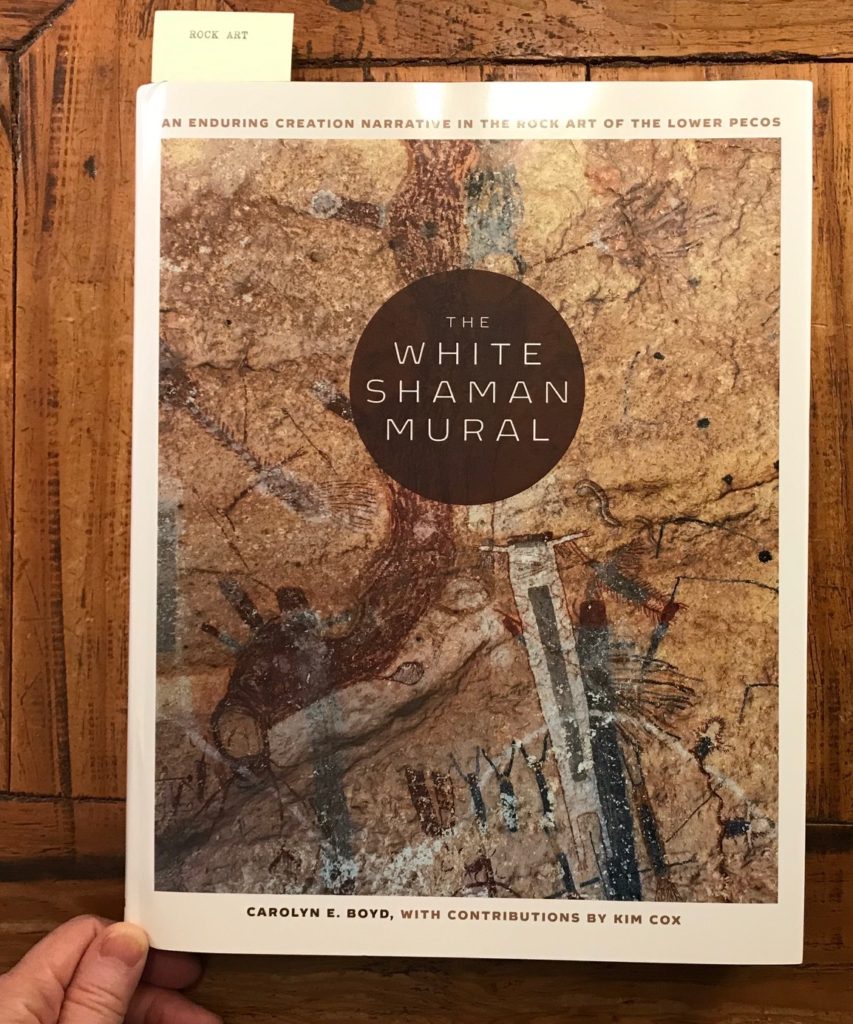
From the catalog copy from the University of Texas Press:
The prehistoric hunter-gatherers of the Lower Pecos Canyonlands of Texas and Coahuila, Mexico, created some of the most spectacularly complex, colorful, extensive, and enduring rock art of the ancient world. Perhaps the greatest of these masterpieces is the White Shaman mural, an intricate painting that spans some twenty-six feet in length and thirteen feet in height on the wall of a shallow cave overlooking the Pecos River. In The White Shaman Mural, Carolyn E. Boyd takes us on a journey of discovery as she builds a convincing case that the mural tells a story of the birth of the sun and the beginning of time—making it possibly the oldest pictorial creation narrative in North America.
Unlike previous scholars who have viewed Pecos rock art as random and indecipherable, Boyd demonstrates that the White Shaman mural was intentionally composed as a visual narrative, using a graphic vocabulary of images to communicate multiple levels of meaning and function.
Drawing on twenty-five years of archaeological research and analysis, as well as insights from ethnohistory and art history, Boyd identifies patterns in the imagery that equate, in stunning detail, to the mythologies of Uto-Aztecan-speaking peoples, including the ancient Aztec and the present-day Huichol. This paradigm-shifting identification of core Mesoamerican beliefs in the Pecos rock art reveals that a shared ideological universe was already firmly established among foragers living in the Lower Pecos region as long as four thousand years ago.
A few blurbs:
“The White Shaman Mural not only provides a thorough demonstration of technique, but it also raises provocative issues regarding the history and cosmovision of Native America. Boyd penetrates the cosmological conceptions of the past as she unveils an amazing text painted on a rockshelter wall thousands of years ago in southwest Texas.”
— Alfredo López Austin, author of The Myth of Quetzalcoatl and emeritus researcher, UNAM
“This is a milestone in the study of ancient American visual culture. First, it showcases the fruitful results of the scientific studies that the authors conducted, as well as their modes of analysis and analogical interpretation. Second, this work makes a major contribution to the literature on the expansive interaction spheres and fluid boundaries between the US Southwest, Mesoamerica, and south Texas. Finally, it provides a solid model for the interpretation of visual imagery from societies without alphabetic writing and especially for the study of Mesoamerican and Native American art.”
— Carolyn Tate, Texas Tech University, author of Reconsidering Olmec Visual Culture: The Unborn, Women, and Creation
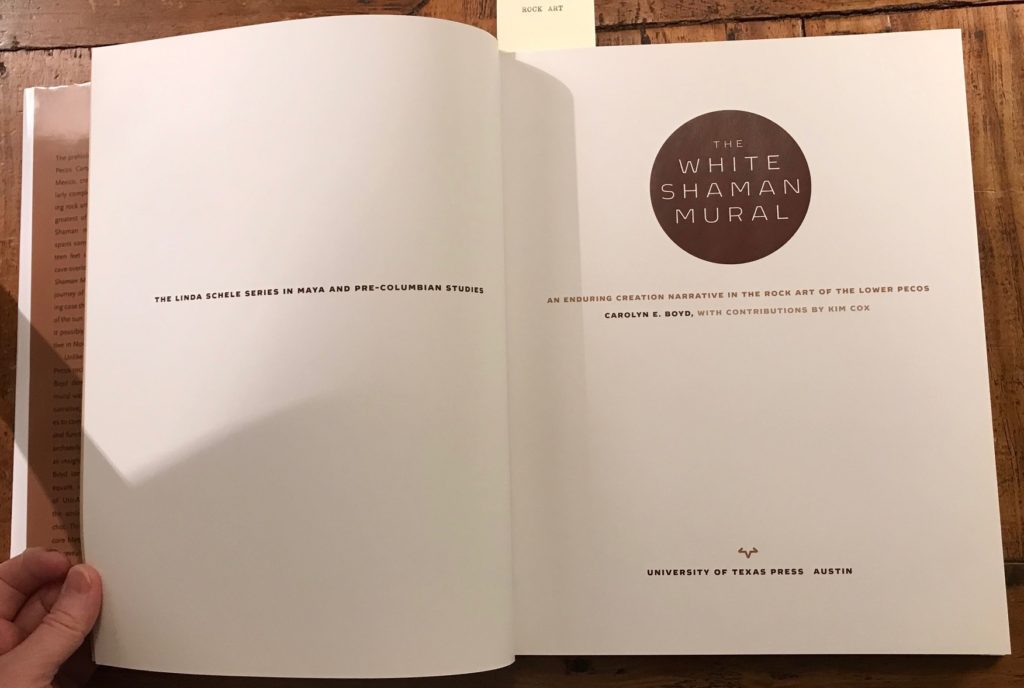
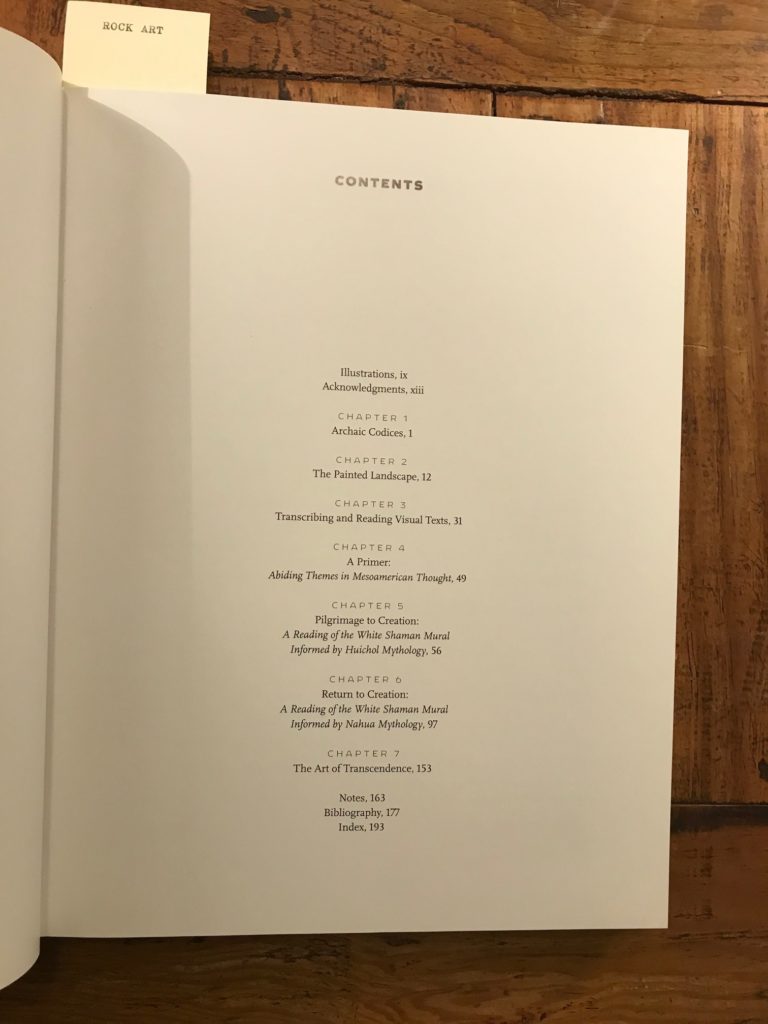
For more about the rock art of the Lower Pecos, see my previous post, which includes some images and a video from my visit to White Shaman, Lewis Canyon, Meyers Spring, Curly Tail Panther, and other rock art sites here.
Here is my video from my visit to White Shaman in 2015:
Recently some major news was announced by the Shumla Archaeological Research and Education Center, which was founded by Dr. Boyd and is based in nearby Comstock, Texas.

| From Shumla’s January 2021 newsletter: The Lower Pecos Canyonlands Archeological District, is now a National Historic Landmark. This land has always been sacred. There’s no question about that. For those of us lucky enough to have spent time in this place, it holds an almost magical allure. The decision by Archaic people to record their beliefs in marvelous works of art here suggests that they also felt this place was special. Scientifically speaking, the archaeological sites in the Lower Pecos Canyonlands contain a superlative, unbroken record of human occupation spanning at least 11,000 years, represented by extensive deposits and pictographs. For nearly a century, archeologists and art historians have recognized the outstanding significance of these sites, their cultural deposits, and their art. Combined, the deposits and the art can yield a far more complete and complex picture of the past. Pecos River style (PRS) pictographs, unique to the region, are abundant, well-preserved, complex, and among the most significant body of pictographic images in North America. For all these reasons, the Lower Pecos Canyonlands Archeological District has now taken its place next to other National Historic Landmarks that tell the story of America from the earliest inhabitants to our modern history. What does the designation mean? A National Historic Landmark designation is national recognition. You might compare it to receiving a recognition award at your job. I doesn’t necessarily “do” anything unless you put it on your resume and take advantage of the recognition as you seek to move ahead in your career. From Shumla’s perspective, designation of the Lower Pecos Canyonlands Archeological District as a National Historic Landmark will help us immensely as we work to raise awareness and funding for the continued preservation and study of these incredible sites. |

Q & A with Mary S. Black,
on Her New Book From the Frío to Del Río
A Review of Patrick Dearen’s
Bitter Waters: The Struggles of the Pecos River
Find out more about
C.M. Mayo’s books, articles, podcasts, and more.



